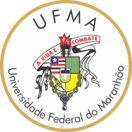| Compartilhamento |


|
Use este identificador para citar ou linkar para este item:
https://tedebc.ufma.br/jspui/handle/tede/6148Registro completo de metadados
| Campo DC | Valor | Idioma |
|---|---|---|
| dc.creator | DINIZ, Mary Cristina Rodrigues | - |
| dc.creator.Lattes | https://lattes.cnpq.br/3797395820189623 | por |
| dc.contributor.advisor1 | OLIVEIRA, Rita de Cássia | - |
| dc.contributor.advisor1Lattes | http://lattes.cnpq.br/136239045749836 | por |
| dc.contributor.referee1 | OLIVEIRA, Rita de Cássia | - |
| dc.contributor.referee1Lattes | http://lattes.cnpq.br/136239045749836 | por |
| dc.contributor.referee2 | CAVALCANTE, José Dino Costa | - |
| dc.contributor.referee2Lattes | http://lattes.cnpq.br/0708860193607869 | por |
| dc.contributor.referee3 | AMARAL, Antônio Roberto do | - |
| dc.contributor.referee3Lattes | http://lattes.cnpq.br/7662501395554138 | por |
| dc.date.accessioned | 2025-05-14T13:19:39Z | - |
| dc.date.issued | 2025-03-31 | - |
| dc.identifier.citation | DINIZ, Mary Cristina Rodrigues. No escreviver da violência em Conceição Evaristo: a metáfora do agressor nos contos “Aramides Florença”, “Shirley Paixão” e “Lia Gabriel”. 2025. 116 f. Dissertação (Programa de Pós-Graduação em Letras - Campus Bacanga) - Universidade Federal do Maranhão, São Luís, 2025. | por |
| dc.identifier.uri | https://tedebc.ufma.br/jspui/handle/tede/6148 | - |
| dc.description.resumo | A presente pesquisa tem como objetivo analisar em três contos literários de Conceição Evaristo, “Aramides Florença”, “Shirley Paixão” e “Lia Gabriel”, presentes na coletânea Insubmissas Lágrimas de Mulheres (2016), a representação do agressor na violência doméstica através da metáfora, tendo em vista que a linguagem poética possui uma referência especial em relação com o mundo, assim como a ficção, através da intriga, que reconfigura os termos da narrativa, transformando a realidade do leitor. Para isso, foi necessário um percurso teórico para a compreensão da metáfora enquanto recurso esquematizante da imaginação produtora, defendido por Ricoeur (2002), para partir para uma análise da política filosófica e sociológica acerca do feminismo enquanto movimento de ruptura do patriarcado e de influência na busca por uma construção discursiva de desnaturalização de estereótipos machistas. Em seguida, observar como esse movimento refletiu no âmbito literário enquanto espaço de representação que tinha a autoria feminina de forma tímida em comparação com a masculina e como a linguagem literária representava fenômenos de violência doméstica em produções do século XX, reproduzindo o sistema patriarcal, como forma de denúncia, além de como é usada hoje para romper esse sistema em produções como as de Conceição Evaristo. A pesquisa é qualitativa de análise de conteúdo com ênfase metodológica na hermenêutica-fenomenológica de Paul Ricoeur, interpretando filosoficamente a investigação em torno da violência doméstica enquanto um fenômeno social e literário e como sua abordagem é representada nos personagens agressor e vítima pela linguagem literária, centralizando a análise nas falas e focos narrativos femininos em torno da agressão para a verificação das metáforas nesse discurso. Como aporte teórico, a pesquisa contempla Ricoeur (1995, 2002, 2005), Saffioti (2015), Biroli (2014), Butler (2003), Mackinnon (1989), Dalcastagnè (2012, 2021), Saul; Diaz-Leon (2018), González (2009), Duarte (2023) e pesquisas expostas em sites de domínio público, como Agência Brasil, G1, Agência Senado e outros estudos, traçando um panorama do fenômeno da violência doméstica que o feminismo trouxe à tona e que é representado na literatura de Conceição Evaristo. | por |
| dc.description.abstract | This research aims to analyze, in three literary short stories by Conceição Evaristo, “Aramides Florença”, “Shirley Paixão”, and “Lia Gabriel”, included in the collection Insubmissas Lágrimas de Mulheres (2016), the representation of the aggressor in domestic violence through metaphor. This approach considers that poetic language has a special reference to the world, just as fiction, through the plot, which reconfigures the terms of the narrative, transforming the reader's reality.To achieve this, the study first examines the philosophical and sociological politics regarding feminism as a movement that disrupts patriarchy and influences the search for a discursive construction that denaturalizes sexist stereotypes. Following this, a theoretical path was taken to understand metaphor as a schematizing resource of productive imagination, as defended by Ricoeur (2002). Subsequently, this study investigates how this feminist movement has been reflected in the literary sphere, where female authorship was historically timid compared to male authorship, and how literary language represented domestic violence phenomena in 20th-century productions — either by reproducing the patriarchal system as a form of denunciation or by challenging it. It also explores how metaphorical language is used today to break this system in works such as those of Conceição Evaristo. The research is qualitative, with a content analysis approach emphasizing Paul Ricoeur's hermeneutic- phenomenological methodology, philosophically interpreting domestic violence as a social and literary phenomenon. It examines how this issue is represented in the figures of the aggressor and the victim through literary language, focusing on female voices and narrative perspectives on aggression to identify metaphors within this discourse. The theoretical framework includes Ricoeur (1995, 2002, 2005, Saffioti (2015), Biroli (2014), Butler (2003), Mackinnon (1989), Dalcastagnè (2012, 2021), Saul; Diaz-Leon (2018), González (2009), Duarte (2023), and research from public domain sources such as Agência Brasil, G1, Agência Senado, among others. This study traces an overview of the domestic violence phenomenon, which feminism has brought to the forefront and is represented in Conceição Evaristo's literature. | eng |
| dc.description.provenance | Submitted by Jonathan Sousa de Almeida (jonathan.sousa@ufma.br) on 2025-05-14T13:19:39Z No. of bitstreams: 1 MARYCRISTINARODRIGUESDINIZ.pdf: 1004293 bytes, checksum: e56a7f04c2b86a9f28bebd8883ed5b0f (MD5) | eng |
| dc.description.provenance | Made available in DSpace on 2025-05-14T13:19:39Z (GMT). No. of bitstreams: 1 MARYCRISTINARODRIGUESDINIZ.pdf: 1004293 bytes, checksum: e56a7f04c2b86a9f28bebd8883ed5b0f (MD5) Previous issue date: 2025-03-31 | eng |
| dc.format | application/pdf | * |
| dc.language | por | por |
| dc.publisher | Universidade Federal do Maranhão | por |
| dc.publisher.department | DEPARTAMENTO DE LETRAS/CCH | por |
| dc.publisher.country | Brasil | por |
| dc.publisher.initials | UFMA | por |
| dc.publisher.program | PROGRAMA DE PÓS-GRADUAÇÃO EM LETRAS - Campus Bacanga | por |
| dc.rights | Acesso Aberto | por |
| dc.subject | literatura; | por |
| dc.subject | violência doméstica; | por |
| dc.subject | metáfora; | por |
| dc.subject | filosofia. | por |
| dc.subject | literature; | eng |
| dc.subject | domestic violence; | eng |
| dc.subject | metaphor; | eng |
| dc.subject | philosophy. | eng |
| dc.subject.cnpq | Análise Lingüística | por |
| dc.title | No escreviver da violência em Conceição Evaristo: a metáfora do agressor nos contos “Aramides Florença”, “Shirley Paixão” e “Lia Gabriel” | por |
| dc.title.alternative | In the writing of violence in Conceição Evaristo: the metaphor of the aggressor in the short stories “Aramides Florença”, “Shirley Paixão” and “Lia Gabriel” | eng |
| dc.type | Dissertação | por |
| Aparece nas coleções: | DISSERTAÇÃO DE MESTRADO - PROGRAMA DE PÓS-GRADUAÇÃO EM LETRAS - CAMPUS BACANGA | |
Arquivos associados a este item:
| Arquivo | Descrição | Tamanho | Formato | |
|---|---|---|---|---|
| MARYCRISTINARODRIGUESDINIZ.pdf | Dissertação de Mestrado | 980,75 kB | Adobe PDF | Baixar/Abrir Pré-Visualizar |
Os itens no repositório estão protegidos por copyright, com todos os direitos reservados, salvo quando é indicado o contrário.




